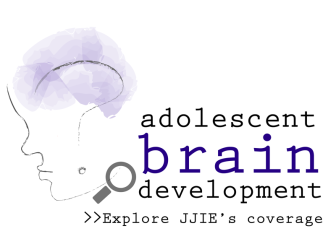
drugfree.org
Susan Broderick
Having devoted my professional career to working in the justice systems, I have seen first-hand the dramatic impact drugs and alcohol have on offenders, victims and their families.
I spent 14 years in the Manhattan District Attorney’s office and for three years I oversaw the investigation and prosecution of child abuse cases. Since 2003, I have been working on child abuse and juvenile justice issues at the national level.
There has been a constant theme in this work – drugs and alcohol do serious damage to children, families and communities and the use of them has a strong correlation to offending. I have also witnessed the power of prevention, early intervention, treatment and recovery and the dramatic impact it can have on those same children, families and neighborhoods.
Learn more about community-based alternatives at the JJIE Resource Hub:
Yet, despite the prevalence, I have encountered a reluctance to address the issue of substance abuse and addiction. This can be attributed to a number of factors, including public perception (that it’s a rite of passage into adulthood) along with the stigma associated with addiction.
With all the reform efforts that have taken place over the last 15 years in the juvenile justice arena, coupled with what we now know about the effects of drugs and alcohol on the adolescent brain and the correlation with offending, it is surprising that an issue of such magnitude is still kept in the background.
 Anyone working in the juvenile justice field is aware of the tremendous changes that have taken place in recent years. The “get tough” policies and practices of the 1990s have given way to a system largely guided by research and evidence based practices. A report recently issued from the National Academy of Sciences, “Reforming Juvenile Justice: A Developmental Approach,” consolidates and highlights these advances in a platform for moving forward.
Anyone working in the juvenile justice field is aware of the tremendous changes that have taken place in recent years. The “get tough” policies and practices of the 1990s have given way to a system largely guided by research and evidence based practices. A report recently issued from the National Academy of Sciences, “Reforming Juvenile Justice: A Developmental Approach,” consolidates and highlights these advances in a platform for moving forward.
A central theme is the importance of having the science surrounding adolescent development inform the policies and practices within the juvenile justice system. The authors emphasize that critical to any understanding of adolescent development research involves knowledge of the developing adolescent brain. The report highlights how this biological immaturity and imbalance among developing brain systems influence juvenile delinquency. The report also emphasizes key environmental factors such as peers, families, schools and communities and the importance of targeted interventions to prevent re-offending.
The report makes several recommendations for moving forward, none of which specifically address drugs and alcohol. However, if we are truly going to move forward with practices and policies that reflect key developmental principles, the effects and consequences of alcohol and drugs on the developing adolescent brain, especially for youth who begin using at early ages, must be addressed. Unlike minor offenses such as shoplifting or graffiti, early use of alcohol and drugs can have dramatic and lifetime consequences.
While experimenting with drugs or alcohol was once considered a rite of passage into adulthood, the average age of onset of alcohol or other substance use of adolescents entering addiction treatment is now below the age of 13. This lowered age of onset is considered by some to be the most clinically and socially significant drug trend of the 20th century.
There have been tremendous strides with regard to what we now know about addiction. Research has confirmed that it is a preventable yet progressive and potentially fatal condition. Although using substances at any age can lead to addiction, the earlier a person begins using drugs and alcohol, the greater the chances of his/her use progressing rapidly into chemical dependency. Data from the SAMHSA in 2011 revealed that more than 90 percent of adults with current substance use disorders starting using before the age of 18; half of those began before 15. Individuals who begin drinking before the age of 14 are seven times more likely to develop alcohol dependence than those who begin drinking at 21.
Coupled with what we know about the developing adolescent brain, research confirms that adolescent substance use can cause abnormalities such as decreases in the size of frontal lobes, cognitive deficits along with heightened risk for addiction and long-term measures of brain functioning.
Very often, it is the involvement with the juvenile justice system that serves as the catalyst to addressing the issue. The “drug-crime” cycle is well established and substance use disorders are linked to both continued offending and a broad range of negative effects, including poor education and psychological outcomes. While sending young people to the juvenile system solely for the purpose of accessing treatment is not appropriate, when young people enter the system based on an offense and a substance abuse problem is not addressed, it is a lost opportunity to affect the lives of these kids and their families in a positive way and to reduce reoffending as well.
We stand at a pivotal moment in history, knowing more than we ever have about substance abuse and the effects on the developing adolescent brain. The time has come to bring this issue front and center. Too many kids are starting to use alcohol and drugs (at very young ages), addiction rates are soaring and lives are being destroyed.
If we are going to get serious, we must look that elephant in the eye and do something now.
Susan Broderick is an assistant research professor at Georgetown University’s Center for Juvenile Justice Reform
